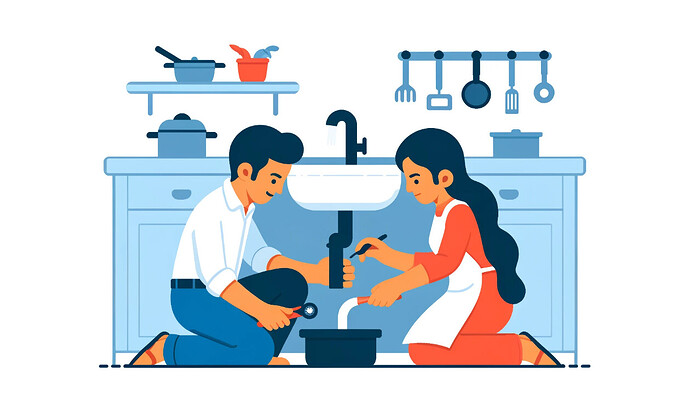Clogged drains are a common household frustration. The good news is that many clogs can be tackled with household items and a little know-how. Here’s a guide to help you unclog your drain, along with some tips to prevent future blockages.
Before You Begin:
- Identify the Drain: Kitchen sinks, bathroom sinks, tubs, and showers all have different drain setups. Knowing the type of drain you’re dealing with will help you choose the most effective method.
- Gather Your Supplies: You’ll likely need a plunger, baking soda, vinegar, a pot of boiling water, and possibly a zip-it drain cleaner (available at most hardware stores).
Step-1: Assess the Clog
- Run some hot water: See if some hot tap water can dislodge the clog. This works well for greasy buildup in kitchen sinks.
Step-2: The Plunger Method
- Fill the sink partially with water: Enough water should cover the plunger cup when placed over the drain.
- Create a seal: Push the plunger firmly onto the drain to create a good seal.
- Plunge forcefully and rhythmically: Plunge up and down for 15-20 seconds. The suction and force can help dislodge the clog.
- Repeat: If the clog doesn’t clear after the first attempt, repeat the plunging process a few more times.
Step-3: The Baking Soda & Vinegar Method (For Kitchen Sinks and Bathroom Sinks)
- Pour baking soda down the drain: Add ½ cup to 1 cup of baking soda.
- Follow with vinegar: Slowly pour down 1 cup of white vinegar. The mixture will fizz and bubble – that’s the baking soda and vinegar reacting to break down the clog.
- Let it sit: Allow the mixture to sit for at least 30 minutes, ideally longer (overnight for stubborn clogs).
- Flush with hot water: Run hot tap water for a few minutes to see if the clog has cleared.
Step-4: Boiling Water Method (For Kitchen Sinks Only)
- Boil a kettle of water: Let the water cool slightly (until it’s steaming but not boiling) to avoid scalding yourself.
- Slowly pour down the drain: Pour the hot water down the drain in stages. The heat can help melt greasy buildup.
Caution: Never use boiling water on PVC pipes as it can cause warping. Only use this method for metal pipes.
Step-5: Zip-it Drain Cleaner (For Tough Clogs)
- If the above methods fail: You can try a zip-it drain cleaner, which is a long, flexible cable that can reach deeper into the pipes to snag and remove hair or debris.
- Follow the instructions carefully: Zip-it drain cleaners come with specific instructions. Be gentle while inserting and removing the cable to avoid damaging the pipes.
Step-6: Professional Help
- If all else fails: If you’ve exhausted all these methods and the clog persists, it’s time to call a professional plumber. They have specialized tools and expertise to handle tougher clogs.
Tips to Preventing Clogged Drains:
- Install drain screens: Use drain screens in your sinks and showers to catch hair and food scraps before they enter the drain.
- Avoid pouring grease down the drain: Grease solidifies as it cools, causing clogs. Let grease cool and solidify, then dispose of it in the trash.
- Don’t flush non-flushable items: Only toilet paper and human waste should be flushed. Feminine hygiene products, wipes, and other items can cause clogs.
- Regular cleaning: Pour a mixture of baking soda and vinegar down your drains every month as a preventative measure.
By following these steps and prevention tips, you can keep your drains flowing freely and avoid future clogs.
If still have any doubts ![]() , ask by replying below.
, ask by replying below. ![]() We will help you to resolve it.
We will help you to resolve it.
